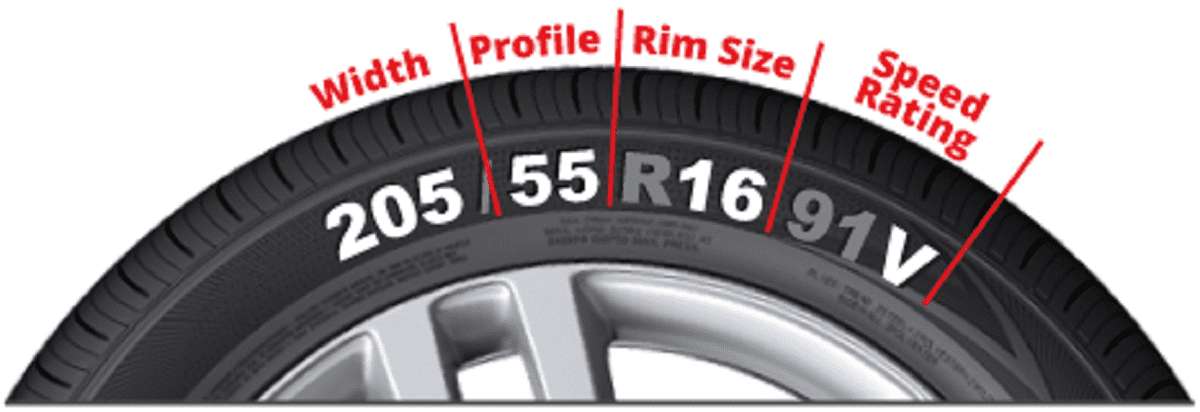The wheels that came installed on your vehicle are designed to perfectly fit your vehicle’s suspension, gearing, and bodywork which can affect ride quality and vehicle performance. But that doesn’t mean you can’t have different wheels or rims installed on your car or truck. To understand what wheels will work for your vehicle, we’ll take a look at rim sizes and some basic measurements.
There are many reasons you might want to switch out your rims. Maybe you want an extra set of wheels and tires for easy installation every winter, or you’re looking for added performance and handling. You might even be going for a specific look, including sleek and stylish or rugged and cool. Whatever your reason, it’s important to note that getting the wrong wheel setup could cause a vibration, or some rubbing on suspension components or vehicle body parts.
Les Schwab Tip: Before you change the tire sidewall height, tread width, or rim size on your vehicle, talk to the experts first. We’ll help translate the difference in RPM, tire speed, load index, and speed rating and how it will or will not fit with your vehicle’s suspension, gearing, and bodywork.
First, start with the wheel size for your vehicle. You can find that on the sidewall of the tires on your original wheels or the inside frame of the driver’s door. Check out Tire Size Explained (Reading the Sidewall) for more.
The wheel diameter (in inches or millimeters) is the fifth set of numbers and letters. What do rim size numbers mean? This number represents the distance between the two bead seat areas where the tire is sealed onto the wheel.
The wheel size also includes its width and offset. The width is the distance from each bead seat (from inside to the outside). The offset determines how the wheel and tire set aligns with the wheel well.
The offset is how far inward or outward the mounting surface is in reference to the center-line of the wheel.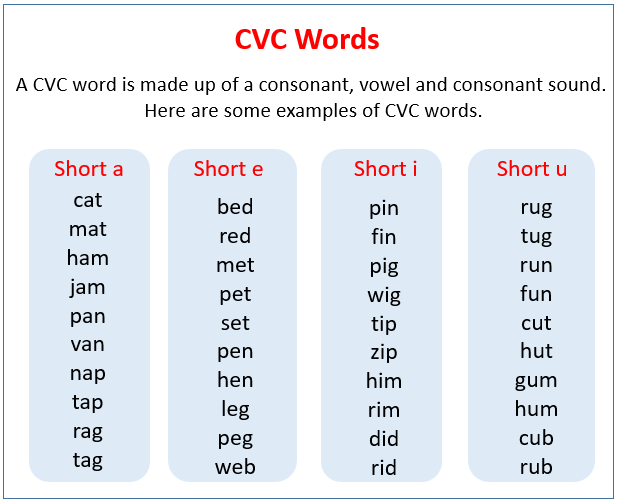 The center-line is calculated by simply dividing the wheel into two equal halves. Les Schwab has the tools to accurately measure your center-line.
The center-line is calculated by simply dividing the wheel into two equal halves. Les Schwab has the tools to accurately measure your center-line.
The offset is how far inward or outward the mounting surface is in reference to the center-line of the wheel.
Here's how offset determines the look of your rims. If the hub mounting surface is in front of the center-line, your rims and tire will be pulled inward. This is called positive offset.
If they are behind the centerline, your rims and tire will stick out from the body of the vehicle. This is negative offset.
Les Schwab Tip: Measuring the offset on your vehicle is difficult without removing the tire and wheel. Consult the pros to get the right fit.
To ensure a set of rims fit properly on your vehicle, you’ll need the hub size on your car or truck as well as the wheel center bore measurement and number of wheel studs (as well as the distance between those studs).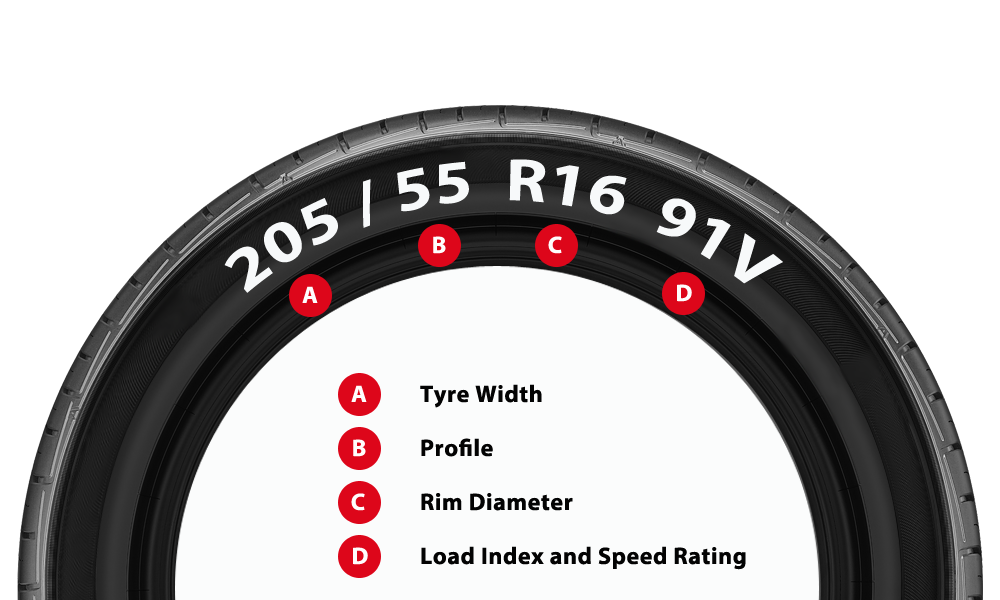 Les Schwab has those measurements for your vehicle, including bolt patterns.
Les Schwab has those measurements for your vehicle, including bolt patterns.
Most vehicles come with a 4-, 5-, 6-, or 8-lug pattern. These bolt patterns, which are specifically spaced, help narrow your wheel or rim choices. While counting the number of bolts on your vehicle is important before buying a set of rims, it’s vital the wheels you choose match the spacing between the wheel studs on your vehicle.
To measure a 4-lug pattern on a set of rims, measure from the center of two holes across from each other. For a 5-lug pattern, measure from the outside of one wheel stud hole and the center of the opposite. And for 6- and 8-lug patterns, measure from the center of one hole to the center of the opposite wheel stud hole. You’ll either need this measurement in inches or millimeters, depending on the wheel manufacturer.
Remember, there’s no need to take these measurements on your own. The pros at Les Schwab do it every day and can ensure you get the right rims for your vehicle.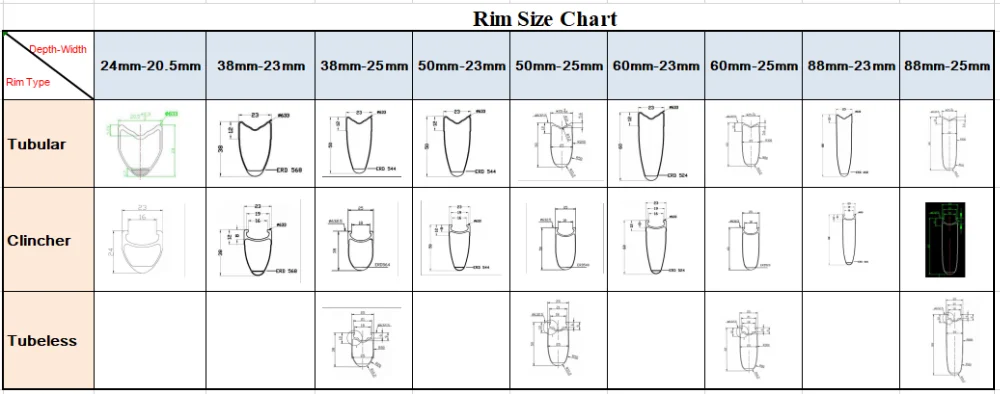
At Les Schwab, we take pride in our custom wheel expertise. Stop by and ask about new wheels for your vehicle. We’ll show you all of your options, whether you’re going for a new look, a boost in performance, a new set of wheels for your winter tires, or simply as a replacement of your current set.
Find A Store Near You
Now playing: Watch this: Read your tires and know what you have
7:00
You can read automotive tires like a book if you know the language, and doing so will help you buy the best ones and get the most miles out of them. Our video above takes you through the entire secret world hiding in plain sight on the side of your tire, but here are a few highlights.
Perhaps the most commonly discussed piece of data about a tire is a number in the format "XXX/XXRXX," which describes a tire's size and shape in a somewhat arcane way.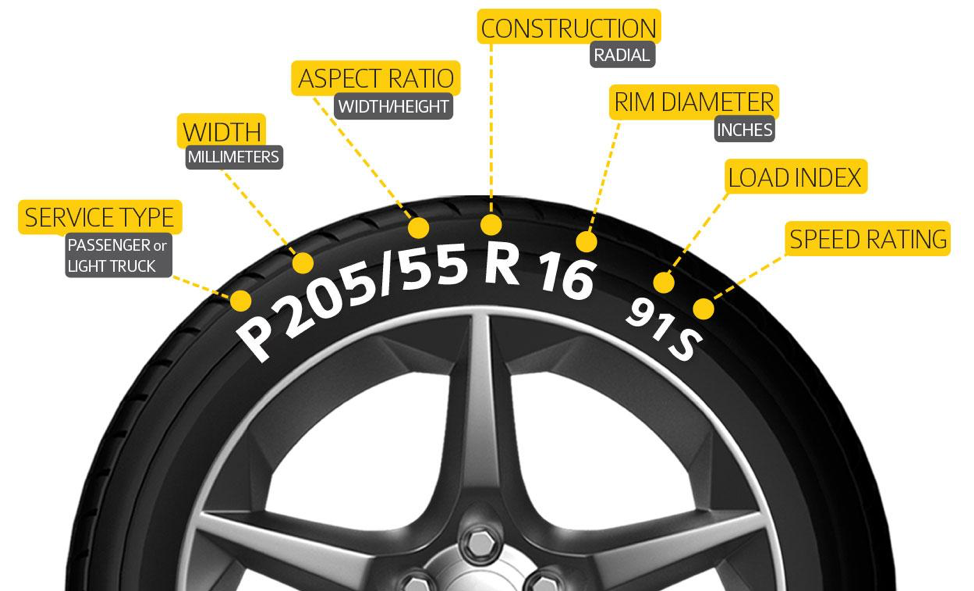 Using 235/55R18 as an example, 235 is the tread width in millimeters. The higher that first number, the wider the tire. The 55 is the height of the tire expressed as a percentage of the width we just saw. The lower this number, the shorter and more aggressively the tire sits on the wheel. The R means the tire is of radial construction (they all are) and the 18 is the diameter of wheel the tire fits, expressed in inches. This string is a real hodgepodge of numbers but it carries the essence of a tire's applicability.
Using 235/55R18 as an example, 235 is the tread width in millimeters. The higher that first number, the wider the tire. The 55 is the height of the tire expressed as a percentage of the width we just saw. The lower this number, the shorter and more aggressively the tire sits on the wheel. The R means the tire is of radial construction (they all are) and the 18 is the diameter of wheel the tire fits, expressed in inches. This string is a real hodgepodge of numbers but it carries the essence of a tire's applicability.
In smaller type, typically at the end of a line that begins with the letters DOT, you'll find a four-digit sequence like 3219. This reveals your tire's manufacturing date, expressed as the week of the year followed by the last two digits of that year. In this example "3219" means the tire was made in the 32nd week of 2019. This is important information because tires can run out of life long before they run out of tread: Heat, UV, ozone and the quality of the tire's materials can end a tire's safe usage life long before it fails the Lincoln penny tread test. The tricky part is knowing how old is too old.
The tricky part is knowing how old is too old.
This tire was made in the 14th week of 2017. The numbers before 1417 are manufacturing codes you or your tire installer should register to make sure you receive recall notices that apply to your rubber.
Emme Hall/RoadshowThe largest tire chain in the US, Discount Tire/America's Tire, has a policy that suggests you replace tires after six years, which is a commonly mentioned rule of thumb though many consumers see it as a ploy to sell them new tires. The company won't even service tires that are over 10 years old, other than to take them off your car, but that isn't as definitive as it sounds. "There is no such thing as a 'freshness date' for tires," says Richard Sherman, tire and accident reconstruction expert at Robson Forensic. "I've seen tires fail in one year or last about 20 years," he says, adding that you should look for sidewall cracking or unusual tread appearance as signals that your tires could be failing in ways that aren't revealed by simple tread depth.
If there is anything like a universal truth about tire age it would be that you should replace any tire with a three-digit date code: The industry hasn't used those codes since 1999.
We've all heard the exhortations to check and maintain our tire pressure for the best fuel economy, handling and safety. All of that is true, but when you grudgingly stoop down at the gas station with that nasty tire inflator, all you see on your tires is a "MAX PRESSURE" number. That is not the proper inflation pressure, merely the highest at which the tire won't disintegrate or come off the wheel. The pressure you should inflate your tire to is located in one of a few places according to federal rules: On a door edge, door post or glove box door or inside the trunk, or on the fuel-filler door and in the owner's manual. That doesn't narrow it down much, but once you know the number it's easy to remember. Just don't inflate to the MAX PRESSURE on the side of the tire.
Contents
. This could be as early as when you bought the bike, or when you first changed a punctured inner tube and tire. How important is it to know the geometric parameters of the “running” bike? Nothing less than sorting out the bushing or lubricating the chain.
Determining the diameter of a bicycle wheel is very easy. We will talk about this in our article. Of course, this parameter is likely to be recognized precisely from the moment of purchase or in the process of “studying” their two-wheeled friend. Nevertheless, suddenly he is unknown for some reason, for example, they let the bike ride for a while, and then the tire went flat, and it was necessary to install a new camera.
The geometrical parameters of bicycles differ from each other according to a strict pattern - this applies to both the size of the frame and the diameters of the wheels. Let's start with a size chart:
Let's start with a size chart:
| Wheel, inches/mm | rim, mm | Bicycle | ||||||||||||||||||||||||||||||||||||||||
| 20/508 | 406 | Children's children, folding, VMX | ||||||||||||||||||||||||||||||||||||||||
| 24/609 | 900 folding adult||||||||||||||||||||||||||||||||||||||||||
| 26/660 | 559 | Mountain | ||||||||||||||||||||||||||||||||||||||||
| 28/711 |
| Road, hybrid, highway | |
| 29/736 | 900.0024 622Mountain Niner |
The first column shows the traditional wheel diameters in inches and millimeters. The wheel is measured with the tire. To find the rim size, subtract the tire height times two. Standard rim sizes are listed in the second column.
The wheel is measured with the tire. To find the rim size, subtract the tire height times two. Standard rim sizes are listed in the second column.
Bicycle wheel measurement systems:
The International Organization for Standardization (ISO) has implemented a universal wheel measurement system to avoid confusion. It is followed by all bicycle manufacturers. The dimensions of the wheels are made up of the diameter of the “clean” rim and the width of the tire profile.
When choosing new tires, you need to know the fit diameters of the rims - these numbers on the tires must match them. This will come in handy when switching to a different tire profile. In everyday life, the wheel is measured in inches, and it is more convenient to give dimensions in inches. And by the size of the wheel, you can also determine the type of bike - walking, mountain or road.
Wheel dimensions are important to know when choosing a children's bike.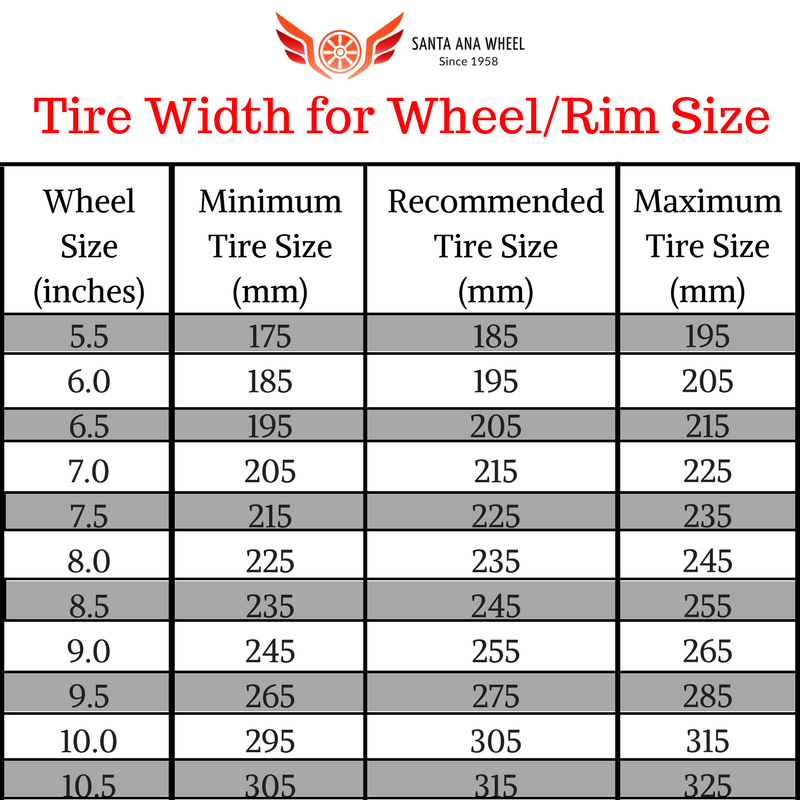 Here there is a direct relationship between the numerical values of the diameters and the height and age of the child, the so-called "wheel size". Below Standards table:
Here there is a direct relationship between the numerical values of the diameters and the height and age of the child, the so-called "wheel size". Below Standards table:
| diameter, inch | growth, cm | Age | |||||||
| 12 | 3 | ||||||||
| 14 | 98 - 104 | 3 - 5 | 3 14, 16 | 104 – 110 | 4 - 5 | ||||
| 16, 18 | 110 - 116 | 5 - 6 | |||||||
| 20 | - 128 | 6 - 8 | |||||||
| 24 | to 164 | to 164 | to 164 | to 164 | to 164 | to 164 | to 164 | to 164 | to 164 |
Wheel sizes for children's bikes are separate from adults: the children's range ends with 24" wheels, while the adult's just starts (excluding 20" BMX). 24-inch wheels can be safely attributed to teenage and universal (for adults of small stature). Of course, these data will only help you choose a bike, otherwise you need to try it on.
24-inch wheels can be safely attributed to teenage and universal (for adults of small stature). Of course, these data will only help you choose a bike, otherwise you need to try it on.
The very essence of measurement is to obtain numerical data - centimeters, millimeters or inches. Can be done in several ways:
The easiest way is the first way. We take a centimeter or tape measure and put the bike vertically so that it does not fall. Attach the ruler with zero strictly to the axis of the sleeve and draw to the edge of the tire. This will be the radius of the wheel in centimeters. Then multiply by two to get the diameter. To get millimeters, you need to multiply by 10, and inches by 2.54.
Measurements from bottom to top will be more accurate
We will measure the diameter of the rim and the height of the tire profile according to ISO. This method may be needed if it is necessary to put a tire of a different profile - several types of tires can be selected for the same rim diameter.
This method may be needed if it is necessary to put a tire of a different profile - several types of tires can be selected for the same rim diameter.
Only measure from the center of the hub to the outer edge of the rim. Knowing the radius, multiply it by 200 - we get the diameter in millimeters. And on it we select another tire.
The third method shows how to determine the diameter in terms of the circumference. For these purposes, you will need a cable and tape measure. We wrap the tire with a cable, make a mark at the junction with the beginning of the cable. We straighten and use a ruler to measure the distance from the beginning of the cable to the mark. This will be the circumference.
You can also:
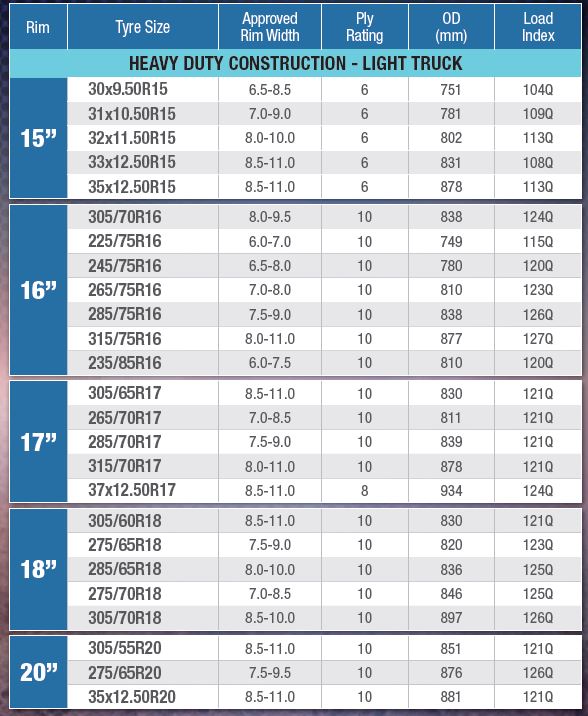
Do not be afraid that for large wheels this value will exceed 200 cm. To begin with, we divide it by 3.14 - we get the diameter in centimeters. And then divide by 2.54 to convert to inches. Actually, it's so easy to find out what size bicycle wheels are.
When measuring with a ruler, most likely fractional values will be obtained, for example, 28.23 inches. We round up to integer values, taking into account the existing diameters.
And now a little about tires and their meanings. According to the classical system, dimensions are applied in this order: wheel diameter in inches / tire profile width.
By analogy, the same dimensions are applied to the tubes: 20 - overall size, 1.75 - tire height in inches
According to the international ISO system, the same parameters are stuffed onto the rubber in the opposite order - first the profile height, then the rim diameter.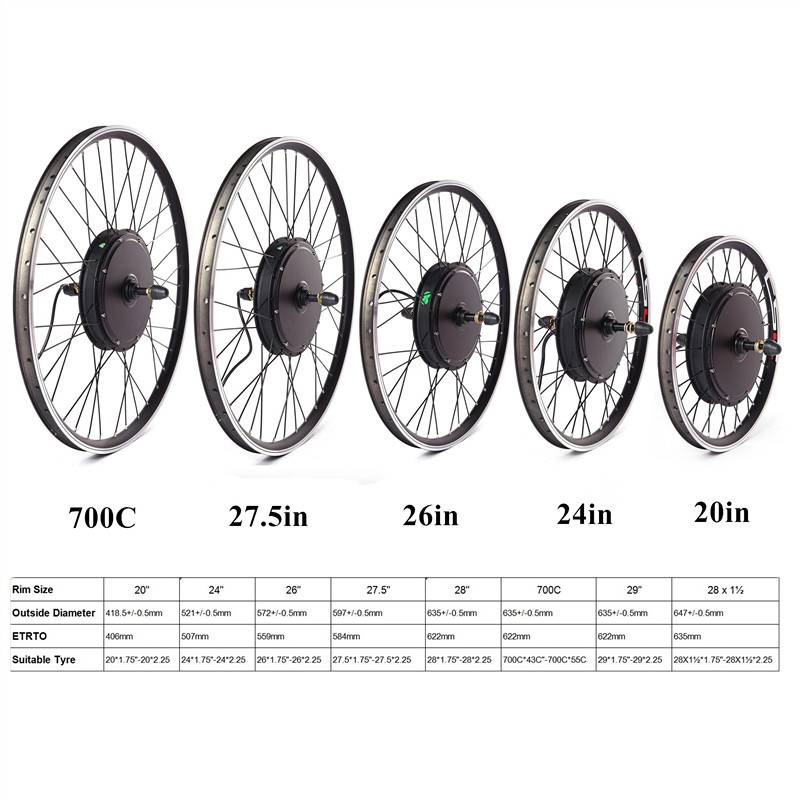 Values are in millimeters. For the same tire or tube 20/1.75 in ISO it will look like this: 44.4/406.
Values are in millimeters. For the same tire or tube 20/1.75 in ISO it will look like this: 44.4/406.
The table below shows the profile height ranges of tires for rim fit diameters:
| Standard marking | Rim, mm | ||
| 20/1.5 – 2.125 | 0025 | ||
| 24/1.5 - 2.125 | 507 | ||
| 26/1 - 2.35 | 559 | ||
| 27/1 - 1.75 |
| 28/1 - 17/17 - 174 28/1 - 17/17/17/17 - 17/17/17/17 - 17/17/1ED | |
| 29/1.75 – 2.35 | 622 |
The following tires can be selected for one fit size. However, it is better to take into account the recommendations of the bicycle manufacturer in the passport and adhere to the recommended parameters.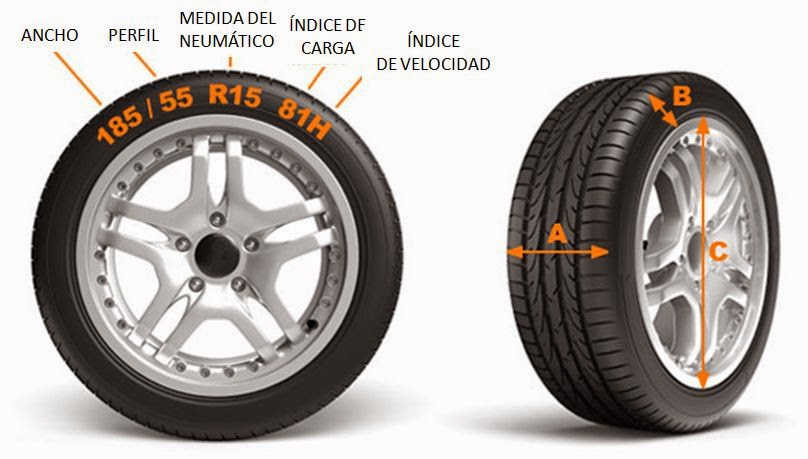 Tires that are too narrow are more likely to puncture, while tires that are too tall increase rolling resistance and can damage the sides. Each rim has its own tires. Optimum matching of tires to the size of the wheels will allow you to ride longer, without punctures and damage.
Tires that are too narrow are more likely to puncture, while tires that are too tall increase rolling resistance and can damage the sides. Each rim has its own tires. Optimum matching of tires to the size of the wheels will allow you to ride longer, without punctures and damage.
Contents

There is a wide variety of rims available. They differ from each other in design features, sizes and materials from which they are made.
When choosing a bicycle rim, you need to consider which bike it will be installed on. Consider its performance characteristics, whether for mountain bike, city, road or highway.
This value is characterized by two parameters:
In order to find out these values, you need to carefully consider the product. As a rule, the manufacturer puts the marking on the surface of the part and it is easy to read. So, for example, the inscription 559x19 indicates that the diameter (landing) is 559 mm, and the width is 19 mm. In the absence of an inscription, you can get the desired numbers through manual measurements.
A caliper is required to measure the inside width.
When measuring the diameter, you need to measure the distance from the center of the wheel to the edge of the bike rim, multiply the resulting value by 2. You can also use a plumb line and a tape measure to measure the entire diameter directly. If this number in centimeters is divided by 2.54, then you get a conversion to inches.
The material and thickness directly affect the weight of the bike wheel.
Due to their lightness and sufficient strength, rolled aluminum bicycle rims are widely used. In second place are iron or steel.
In accordance with the requirements for load and strength, manufacturers produce single, double, triple bike rims. A tubeless type of rim is also made.
The standard for the number of installed spokes is 36, 32, 28 and 16 pieces.
In the past, many tire manufacturers used the outer diameter of a bike tire as a designation system, which is measured in millimeters or inches. For example, 24″ (500mm), 26″ (650mm) or 28″ (700mm). Over time, due to constant confusion, the notation has changed. At present, they began to use a universal system for marking by bore diameter.
For example, 24″ (500mm), 26″ (650mm) or 28″ (700mm). Over time, due to constant confusion, the notation has changed. At present, they began to use a universal system for marking by bore diameter.
There are 3 valid designation systems:
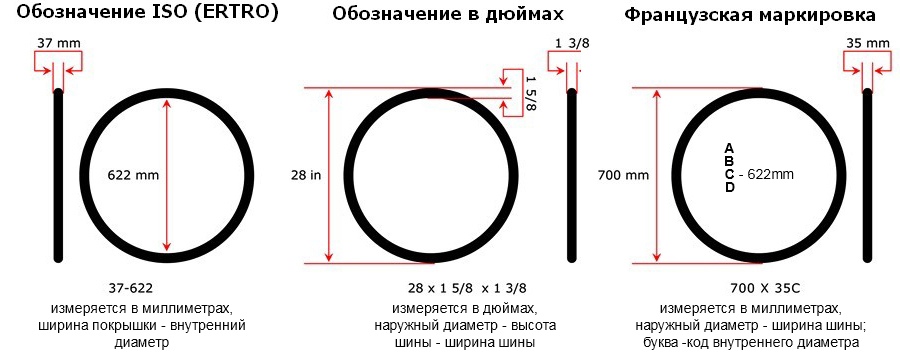
As a rule, in all bicycles the design of the rim has a standard form - it is a box-section with U-shaped sides and several stiffening ribs. This design involves the use of onboard tires. For high-speed bikes, a different rim is provided. It is shaped like a tube. In this case, the tires are “glued” to the surface of the rim using a special tape.
The reliability of an aluminum box structure is determined by the stiffness index, which, in turn, depends on the multi-wall construction. So, in the rim profile section U can go:
The advantage of multi-walled sections is to increase the strength of the structure. There is also a negative side to this. It manifests itself in weight gain.
Additional elements of the rim are grooves for fastening tires and holes for spokes. Their presence weakens the rigidity of the structure, and the slightest damage can lead to damage to the product. In expensive models of rims, caps are used to enhance the strength of the structure. With their help, the knitting needles are tightly fixed in the hole.
Their presence weakens the rigidity of the structure, and the slightest damage can lead to damage to the product. In expensive models of rims, caps are used to enhance the strength of the structure. With their help, the knitting needles are tightly fixed in the hole.
Rim manufacturers make rims from different materials.
Base can be:
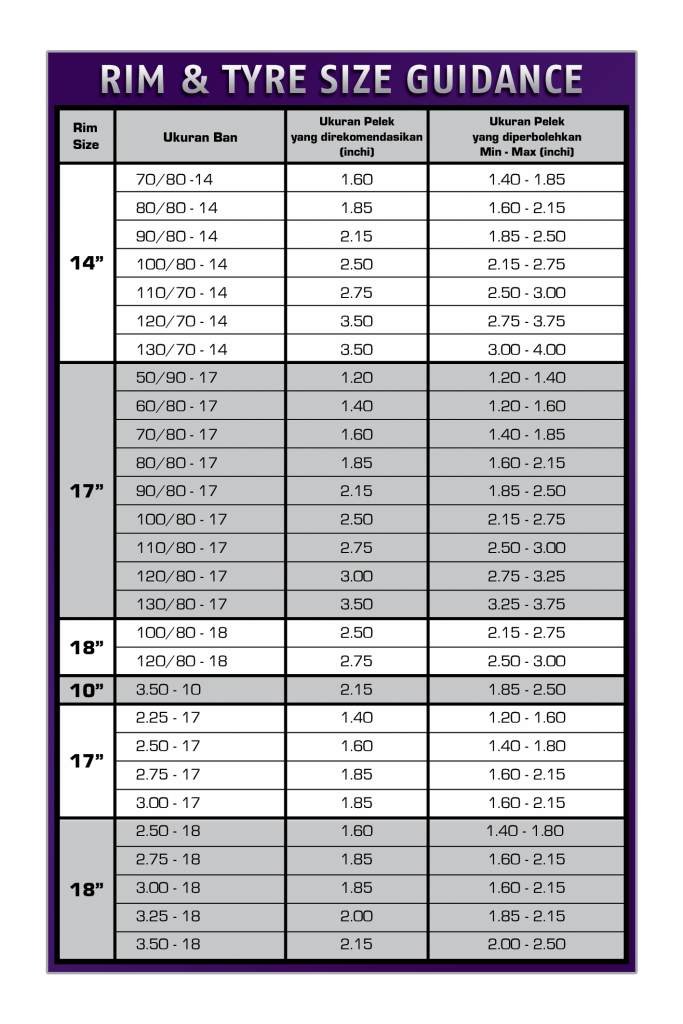 It describes in millimeters all the necessary dimensions. For example, 28-622, where 28 mm is its width and 622 mm is the inner (landing) diameter.
It describes in millimeters all the necessary dimensions. For example, 28-622, where 28 mm is its width and 622 mm is the inner (landing) diameter. 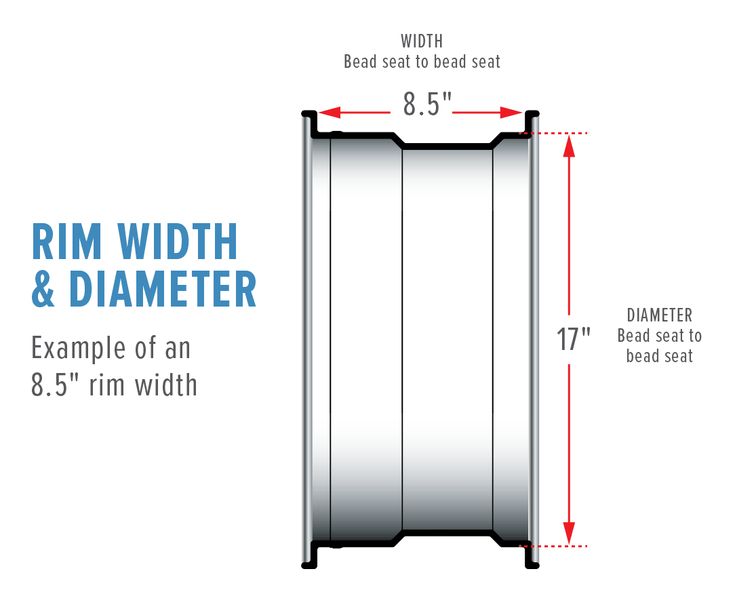 Those. First, the inner diameter of the tire (rim size) is 533 mm, and then its width is 37 mm.
Those. First, the inner diameter of the tire (rim size) is 533 mm, and then its width is 37 mm. For mountain bikes, see the specifications on the rim itself and on your old tire. Take the same or one that is slightly narrower or wider. Usually, mountain bike rims indicate the allowable limits for tire sizes. Traditionally, mountain bikes are fitted with 26″ tires.
Cross country bikes and all mountain bikes have tires from 1.8″ to 2.4″ wide. But downhill and freeride bikes come with 2.5″ to 3.0″ wide tires to reduce the chance of falls.
Road and cyclocross bikes cannot be fitted with other tire widths. Cyclocross tires are slightly ribbed, narrow, 700C and match the geometry of cyclocross racing frames. BMX bikes usually have 20″ tires.
On baby strollers, depending on the model, as a rule, two wheel sizes are used: 10 and 12 inches. If the front axle on the stroller is fixed and does not turn, then the entire stroller has wheels of the same size. Most often it is 12 inches. If the front axle is steerable, then it has 10″ wheels, and 12″ wheels on the rear axle.
Most often it is 12 inches. If the front axle is steerable, then it has 10″ wheels, and 12″ wheels on the rear axle.
Also, it is important to consider that the width of the tire should be 1.45-2 times wider than the inner width of the rim. If you deflate the tire and measure its width between the beads, the result will be approximately 2.5 times the ISO value.
It is not necessary to buy a tire of exactly the same width as the previous one. For better stability, traction, and other factors, other tire sizes may be needed, but don't deviate too far from current sizes. It is considered optimal if the width of the tire is 1.5–2.1 times wider than the inner width of the rim.
If you measure the distance between the turns, then tires with a large number of turns (120-160 tpi) are considered stronger, lighter, but more expensive. Whereas tires with fewer turns (20-30 tpi) are always cheaper, more massive and less durable.
Tire sizes may be given as a decimal (26x1.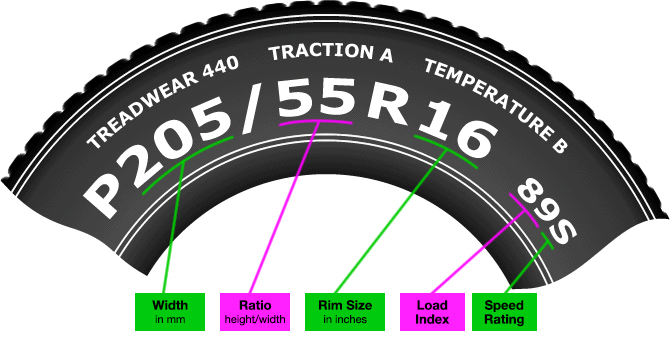 75) and as a fraction (26x1 ¾). Mathematically, these fractions are equal: 1.75 = 1 3/4. But, in terms of fit size and tire width in millimeters, this is not always the case. Tires with these sizes are not interchangeable. This should always be taken into account when choosing new tires.
75) and as a fraction (26x1 ¾). Mathematically, these fractions are equal: 1.75 = 1 3/4. But, in terms of fit size and tire width in millimeters, this is not always the case. Tires with these sizes are not interchangeable. This should always be taken into account when choosing new tires.
Both tires have the same inner diameter: 622 mm and can therefore be mounted on the same rims.
In Europe and in many other countries, 28 inches is the standard wheel size for touring bikes. Outside of Europe, the 622mm rim diameter is very rarely used.
A few years ago, the 29" tire was introduced to the market as a new wheel size for mountain bikes. This marking was coined because mountain bike tires are bulkier and have an outer diameter of approximately 29 inches.
However, both of these observations are not accurate. For example, a smaller 28-inch tire with a width of 23 mm fits a road bike, but in fact, its outer diameter is a little more than 26 inches. And this is the case if the tire width is 40 mm. It is true that the outer diameter is 28 inches. And if the tire is very wide - 60 mm or more, then the actual outer diameter will be somewhere around 30 inches.
And this is the case if the tire width is 40 mm. It is true that the outer diameter is 28 inches. And if the tire is very wide - 60 mm or more, then the actual outer diameter will be somewhere around 30 inches.
These new sizes are doing well on the market, and for good reason. The advantages of large wheels outweigh the disadvantages. 29" wheels weigh a little more and may be less agile and stiff, but they do glide faster on rough terrain. They have a higher roll, which provides better grip on the road with the tires.
However, some bikes cannot be fitted with large 29-inch wheels, for example, on bicycles that have very small frames and too much suspension travel. It is on such bicycles that new wheels with a size of 27.5 are used.
The list below shows all common tire sizes. For each tire size, find the corresponding ETRTO size in this list. This lists all tire sizes that are currently on the market or have been used in the past.